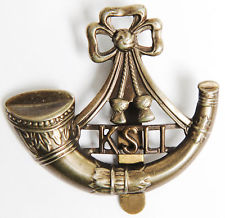Personal Details
Born: 25 April 1892 in Whitchurch, Shropshire.
Family: He was the sixth of nine children born to George Dulson, a paviour, and his wife Elizabeth. He married Rosanna B. Grice Quarter 4 1936 in Whitchurch, Shropshire. They had two children Herbert, born 1938 and Elizabeth, born 1939.
Residence: On the 1901 Census his family were living at 4 Smallbrook Buildings, Whitchurch. By 1911 he was a boarder at 21 Yardington. The address given on the 1919 Absent Voters list was 6 Raven Yard, the home of his parents. In 1939, now married, he was living at 1 Eaton`s Yard, Whitchurch.
Employment: He was working as a paviour in 1911 but by 1939 he was a milk receiver working for United Dairies.
Died: Quarter 2 1965 in Whitchurch,Shropshire, aged 72.
Military Details
Regiment: King’s Shropshire Light Infantry
Rank: Private
Service Number: 225541
Date of Enlistment: Not known
Date of Discharge: Not known
Reason for Discharge: Not known
Fred was awarded the Campaign Medals (British War Medal and Victory Medal)

The British War Medal (also known as 'Squeak') was a silver or bronze medal awarded to officers and men of the British and Imperial Forces who either entered a theatre of war or entered service overseas between 5th August 1914 and 11th November 1918 inclusive. This was later extended to services in Russia, Siberia and some other areas in 1919 and 1920. Approximately 6.5 million British War Medals were issued. Approximately 6.4 million of these were the silver versions of this medal. Around 110,000 of a bronze version were issued mainly to Chinese, Maltese and Indian Labour Corps. The front (obv or obverse) of the medal depicts the head of George V. The recipient's service number, rank, name and unit was impressed on the rim.
The Allied Victory Medal (also known as 'Wilfred') was issued by each of the allies. It was decided that each of the allies should each issue their own bronze victory medal with a similar design, similar equivalent wording and identical ribbon. The British medal was designed by W. McMillan. The front depicts a winged classical figure representing victory. Approximately 5.7 million victory medals were issued. Interestingly, eligibility for this medal was more restrictive and not everyone who received the British War Medal ('Squeak') also received the Victory Medal ('Wilfred'). However, in general, all recipients of 'Wilfred' also received 'Squeak' and all recipients of The 1914 Star or The 1914/1915 Star (also known as 'Pip') also received both 'Squeak' and 'Wilfred'. The recipient's service number, rank, name and unit was impressed on the rim.

